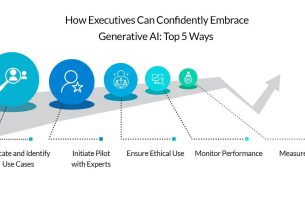Connected health systems are transforming healthcare by integrating technology to improve patient outcomes, enhance efficiency, and reduce costs. Wearable devices and remote patient monitoring (RPM) tools play a crucial role in this transformation. These technologies enable continuous data collection and transmission, providing healthcare providers with real-time insights into patients’ health status. This proactive approach allows for timely intervention, personalized treatment plans, and improved overall patient care. By leveraging the power of connected devices, healthcare systems can move from reactive to proactive models, empowering individuals to take control of their health and well-being. Knowing how connected health works is important here.
Wearable Devices: Empowering Individuals
Smartwatches and fitness trackers have become ubiquitous, offering a wide range of health-related features. These devices continuously monitor vital signs such as heart rate, sleep patterns, activity levels, and even blood oxygen saturation. The collected data is then transmitted wirelessly to smartphones or other connected devices, allowing users to track their progress and identify potential health issues. Furthermore, wearable devices can be integrated with connected health systems, enabling healthcare providers to remotely monitor patients’ health data. This allows for early detection of anomalies, timely intervention, and personalized treatment plans based on real-time data.
Remote Patient Monitoring: Bridging the Gap
Remote patient monitoring (RPM) tools extend the reach of healthcare beyond traditional clinical settings. These devices enable patients to monitor their health from the comfort of their homes, while healthcare providers receive continuous data updates. RPM devices include blood pressure monitors, glucose meters, weight scales, and specialized sensors for specific conditions like cardiac monitoring or respiratory function. The data collected is transmitted securely to healthcare providers, allowing them to track patients’ progress, identify potential complications, and make timely adjustments to treatment plans. RPM is particularly beneficial for managing chronic conditions, reducing hospital readmissions, and improving patient engagement.
Data-Driven Insights for Proactive Treatment
The data generated by wearables and RPM devices provides valuable insights into patients’ health status, enabling proactive treatment and personalized care. Healthcare providers can analyze trends, identify patterns, and detect anomalies that may indicate underlying health issues. This allows for early intervention, preventing complications and improving patient outcomes. For example, continuous glucose monitoring can help diabetic patients manage their blood sugar levels more effectively, reducing the risk of long-term complications. Similarly, remote cardiac monitoring can detect arrhythmias or other heart abnormalities, enabling timely treatment and preventing potentially life-threatening events.
Challenges and Future Directions
While wearables and RPM offer significant benefits, there are challenges to overcome. Data privacy and security are paramount, requiring robust measures to protect patient information. Interoperability between different devices and systems is also essential to ensure seamless data exchange and integration. Furthermore, healthcare providers need to be trained on how to effectively use and interpret the data generated by these technologies. As technology advances, we can expect to see more sophisticated wearable devices and RPM tools that offer even greater insights into patients’ health. The integration of artificial intelligence (AI) and machine learning (ML) will further enhance the ability to analyze data, predict health risks, and personalize treatment plans.



